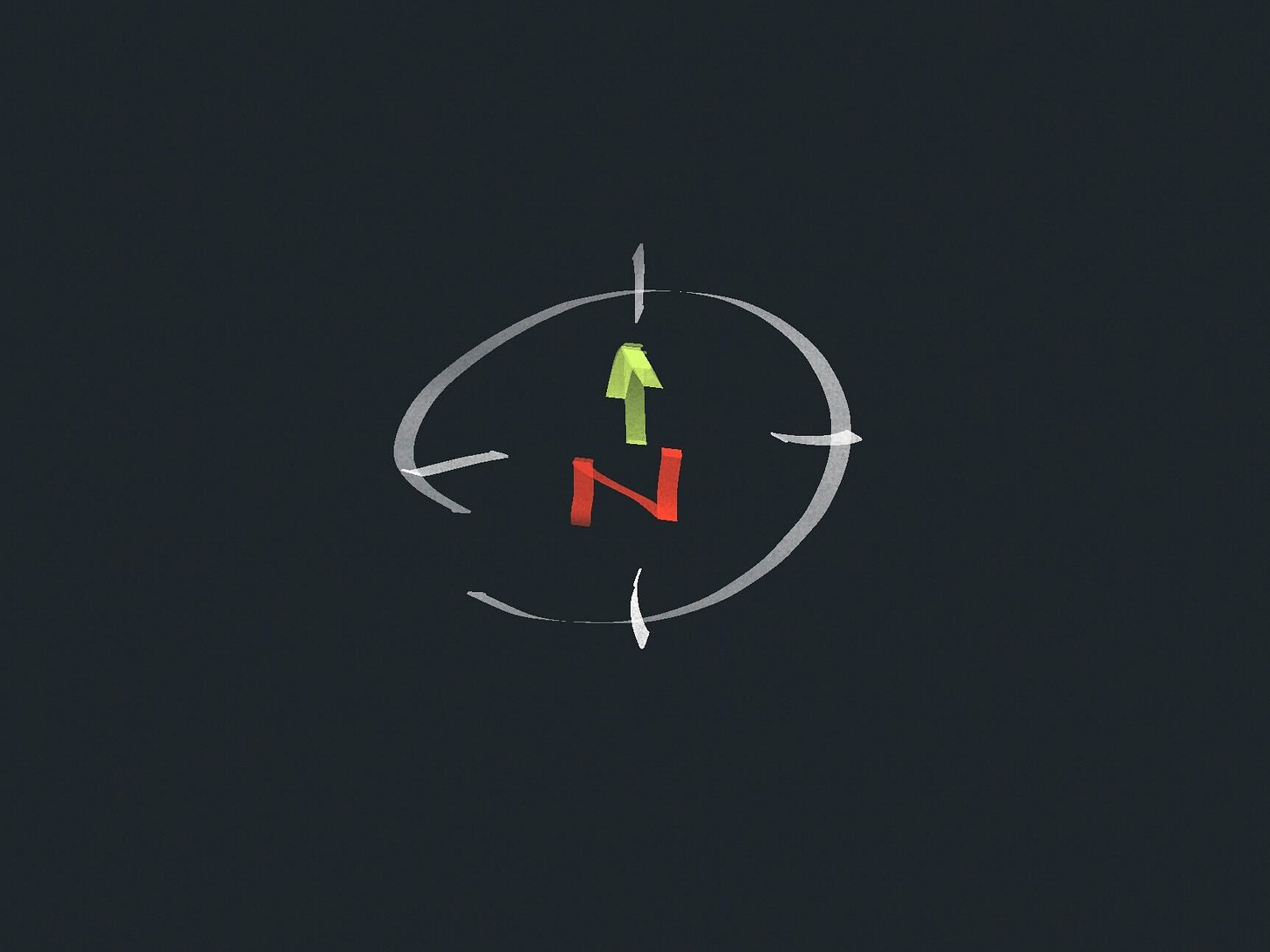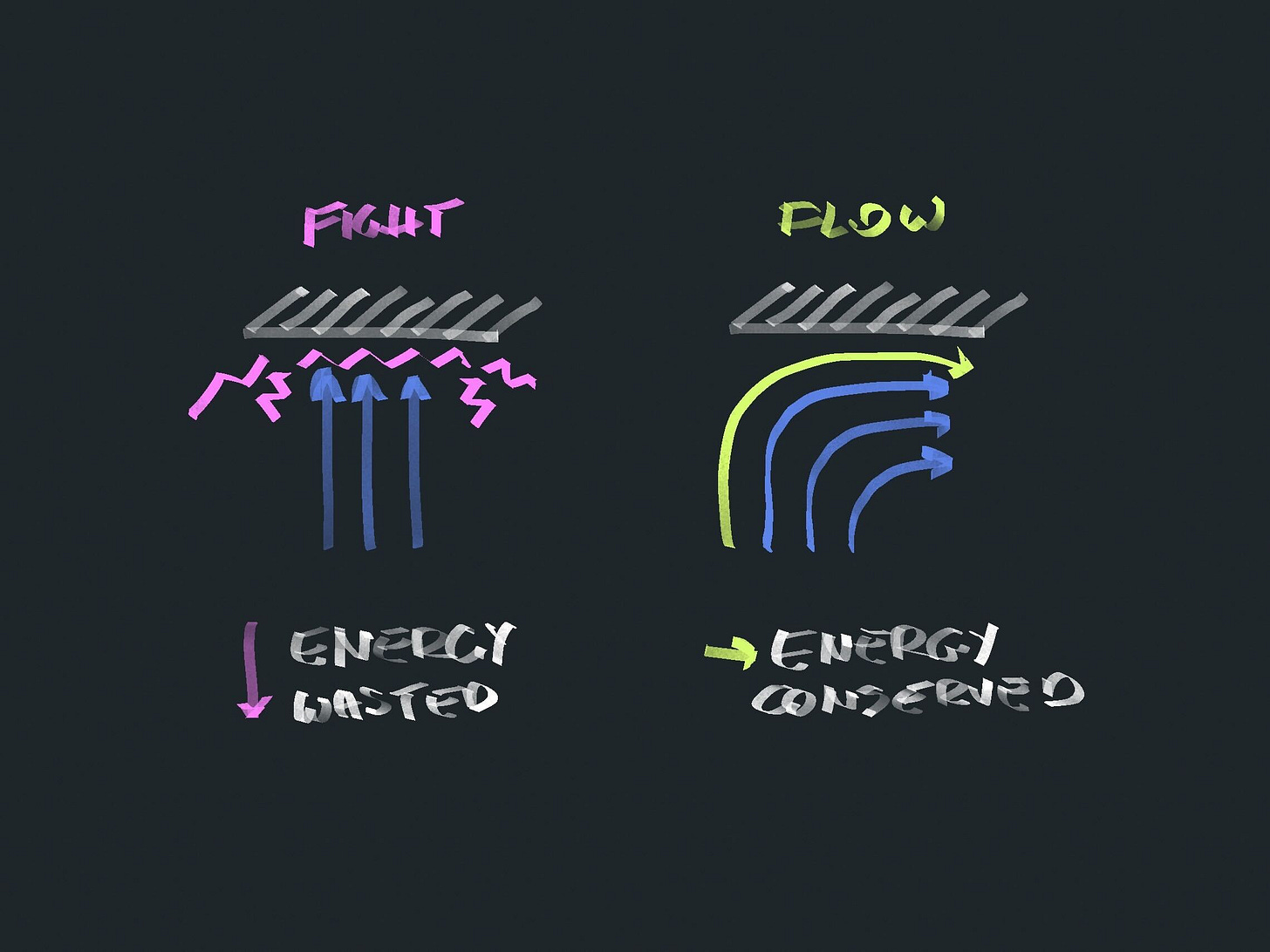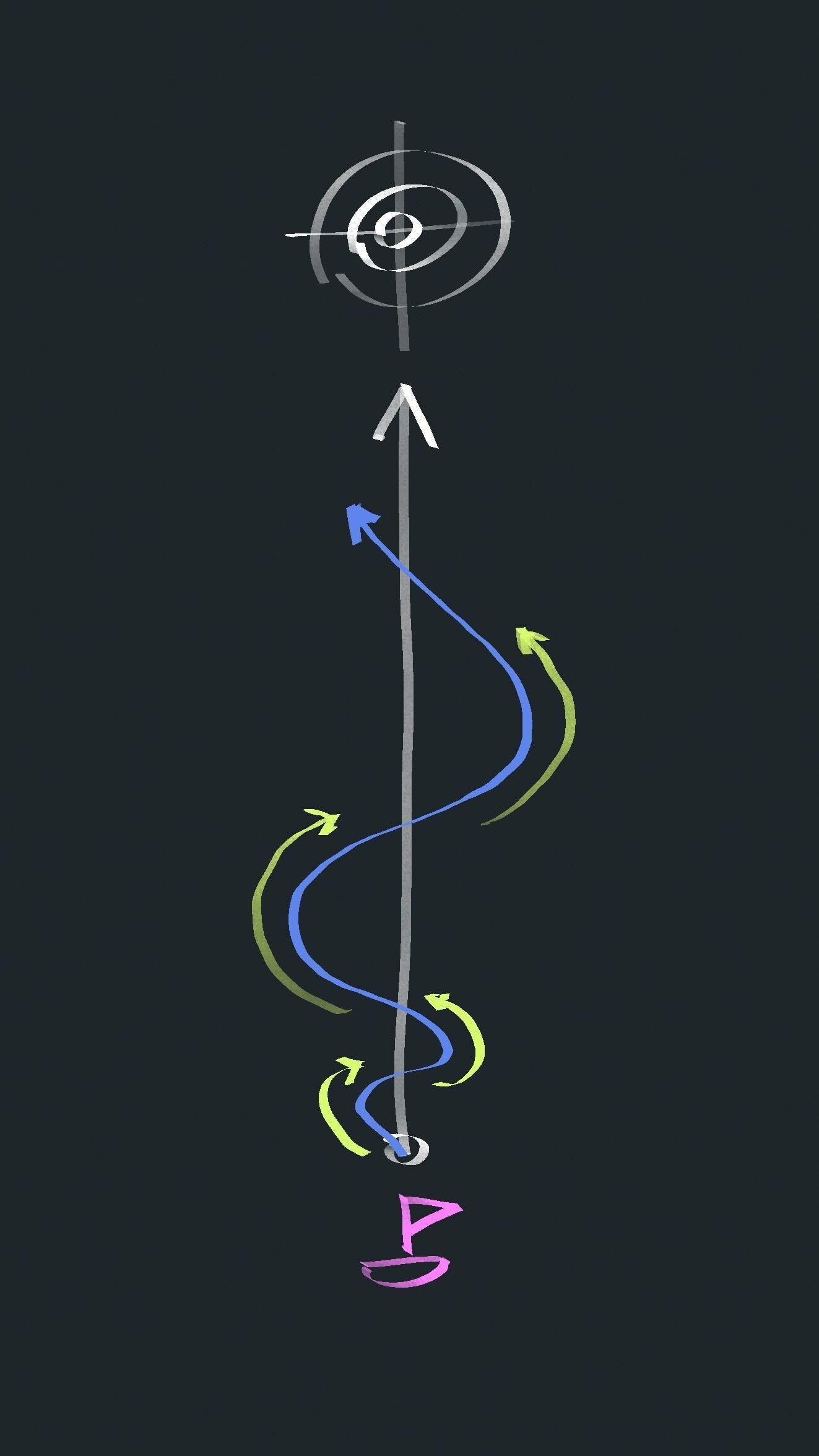Imagine a vast blue ocean.
Its water surface undisturbed, forming calm waves. Coming just right from the corner of your eye, you can notice a little white-sail boat crossing the water. The wind pushes the boat and you can see the white trail behind it. It’s moving surprisingly fast for a one-person vessel.
Now imagine you are on this boat. As a matter of fact, you are its proud captain and navigator. Your primary objective? To reach your destination. Hopefully without any major delays.
The open sea is unpredictable. The clouds gather in front of you, the storm is approaching, and you can’t do anything about it. Since it's not your first rodeo – know that the strong wind and waves will soon surely set you off course.
Different people react differently to such unexpected adversities.
There are two types of captains. The goal-based, and the vector-based. The goal-based ones rigidly focus on the goal and have their eyes constantly glued to the GPS monitor screen showing the exact destination. For them – any deviation from the previously established path is a failure, which makes them feel anxiety and anger. Meanwhile, the vector-based captains, whenever faced with adversity, calmly reach out for their compass to navigate. They go with the flow and reach their destination without unnecessary struggle.
I have been the goal-based captain for most of my life. And let me tell you – it’s been a drag. Only recently have I begun to shift perspective and trust the compass in my pocket. And things began to change, for the better. Here’s what helped me become a better life sailor.
Just like navigation at sea, life rarely follows a straight path. How we handle these inevitable detours – that's where the real journey begins.
The Two Captains
There’s a key distinction between the Goal-based and the Vector-based approach. The former defines success as hitting specific targets, while the latter sees success as a consistent movement in the right direction while adapting.
Hardcore Goal-based individuals prefer to pursue their goals in a straight line. They always have a detailed plan, and abhor any divergence. As a direct result of this approach, they find themselves very often at odds with reality and feel they need to fight it to push through. They trust the GPS system to guide them.
Where the Goal-based individuals focus on a fixed endpoint, the Vector–based ones focus on the momentum and direction. They remain adaptive to changing circumstances and are fine with adjusting the course if the situation demands it. They remain observant at all times, do small course corrections, and rarely reach their goals in a straight line. They use a compass to guide them.
These approaches play out dramatically in the professional world. Take Alex and Lucy, two sailors on very different journeys. Alex launches his tech startup with an ironclad 5-year plan and refuses to budge from his $10M revenue goal, even when the market takes unexpected turns – his rigid approach leads to burnout and missed opportunities. Meanwhile, Lucy embraces change in her UX design career, adapting her skills when AI tools emerge and focusing on "creating better user experiences" rather than chasing specific titles or numbers. The result? Her flexible approach opens doors to natural evolution and exciting unexpected opportunities, while Alex's inflexibility closes them.
Why It Matters
A good deal of my life has been about being fixated on the goal and not noticing I'm drifting off course. Then, finding myself in a bad place and needing to painfully return to balance while being exhausted by the struggle. I learned this lesson the hard way, fighting against every wave until I realized that adaptation isn't just easier – it's smarter.
And here's the thing: adopting the Vector-based approach isn't just about making life easier (though trust me, it does!) – it's absolutely crucial for three key reasons.
First, it aligns perfectly with reality's unpredictable nature. Think about it: when was the last time anything significant in your life went exactly according to plan? Sailors might not use fancy words like VUCA to describe the unpredictability of the sea, but they understand this truth deeply. The weather changes, currents shift, and successful navigation requires constant adaptation.
Second, this approach can save you from disaster. Remember the Titanic? Their rigid commitment to a schedule and destination led to tragedy. A more adaptable approach – slowing down, adjusting course as ice warnings came in – could have saved 1,500 lives that night. While our daily challenges might not be life or death, the principle remains: flexibility prevents catastrophe.
Third – and this is the game-changer I wish I'd understood years ago – the Vector-based approach is incredibly energy efficient. With every unforeseen change, the Goal-focused approach defaults to fighting reality.
Each of these battles drains your energy and momentum. The Vector-based approach, on the other hand, lets you work with reality instead of against it. You bend instead of breaking, maintaining forward momentum even when obstacles arise.
Although we live in a VUCA world, we can handle it with the right mindsets and approaches. The Vector-based approach isn't just a nice-to-have - it's essential for navigating today's unpredictable waters.
Finding Your True North
Let's get real – switching from GPS to compass isn't just about buying new equipment. It's about rewiring how we think about success itself. After years of obsessing over precise coordinates, here's what I've learned about making the Vector-based approach work in real life.
Finding Your Vector First things first – you need to identify your true north. But unlike what most self-help books tell you, this isn't about setting SMART goals or creating detailed five-year plans. Instead, ask yourself: "What direction energizes me? What winds consistently fill my sails?"
For me, it was realizing that while my destination might be "building successful products," my vector was actually "helping people solve meaningful problems." See the difference? One is a fixed point; the other is a direction that opens up countless exciting possibilities.
The Art of Tacking
Here's where sailing gets fascinating – and where our metaphor becomes incredibly practical. Sailors use a technique called tacking when they can't sail directly into the wind. Instead of fighting the impossible, they zigzag their way forward, making steady progress through indirect movement.
In real life, tacking might look like:
Taking a seemingly unrelated job that eventually connects to your dream career
Learning a new skill that doesn't have immediate applications
Exploring opportunities that feel like detours but keep you moving in your general direction
The hardest part?
Learning to trust the process.
When I first started tacking in my career, every detour felt like a failure. That perfectionist voice in my head would scream, "You're going off course!" But here's the truth: those apparent detours often led to the most valuable discoveries.
"But how do I know if I'm making progress?" I hear you ask. Fair question! Instead of checking off rigid goals, try these vector-based metrics:
Am I learning something that expands my perspective?
Are my decisions aligned with my chosen direction?
Do I feel energized by the general path I'm on?
Have I discovered unexpected opportunities by staying flexible?
Progress isn't always about closing the distance to a specific point. Sometimes it's about expanding your sailing territory and discovering better destinations than you initially imagined.
Here's something I wish someone had told me earlier:
You have permission to tack.
Permission to take the indirect route.
Permission to discover that your original destination wasn't actually where you needed to go.
In fact, some of the most successful sailors I know intentionally leave their destination ports blank. They understand that while having a direction is crucial, staying open to where that direction might lead them is equally important.
Setting Sail
The sea, like life, doesn't care about our perfect plans. But here's the beautiful thing I've learned: it doesn't have to. With a compass in hand and the wisdom to adjust our sails, we can navigate any waters that come our way.
The choice facing you isn't just about navigation style – it's about how you want to live. Will you be the captain who exhausts themselves fighting every wave or the one who learns to read the winds and find opportunities in unexpected currents?
I still catch myself reaching for the GPS sometimes, seeking that illusion of certainty. But then I remember: my best adventures, biggest breakthroughs, and most meaningful discoveries came from moments when life blew me off my carefully plotted course.
So next time you feel those winds of change picking up, try something different. Reach for your compass instead of your GPS. Trust your direction rather than your destination. You might just find yourself exactly where you need to be – even if it's nowhere you planned to go.









